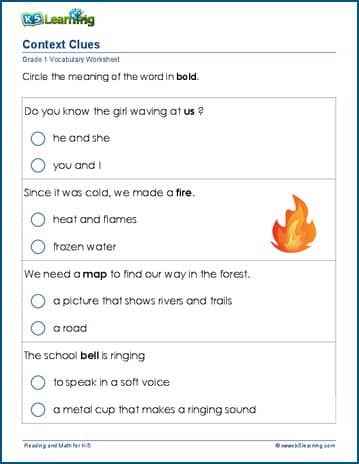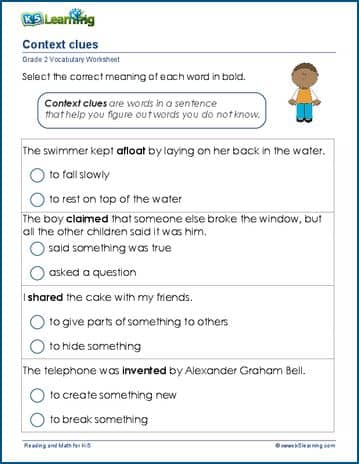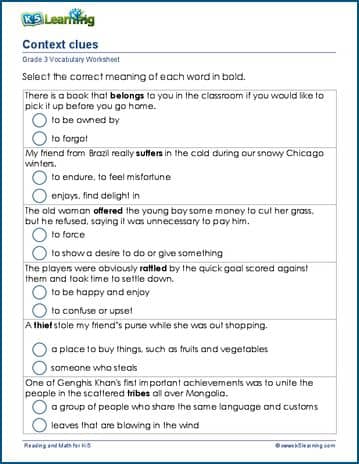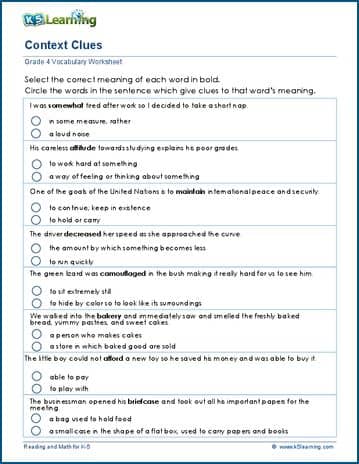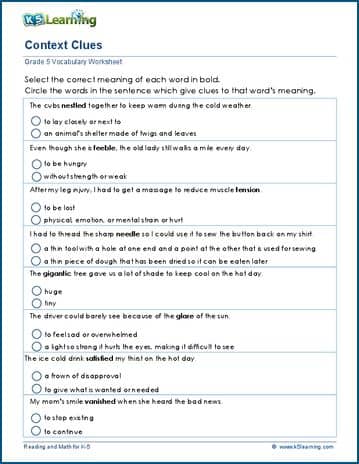Context clues can provide valuable hints about a word's meaning, even if the student is unfamiliar with the word itself. Here are some strategies students can use.
Read the surrounding sentences
Start by reading the sentence or sentences containing the unfamiliar word. Sometimes, the meaning of the word is directly explained or implied in the text.
Look for synonyms or antonyms
Search for words in the same sentence or nearby sentences that are synonyms (words with similar meanings) or antonyms (words with opposite meanings) of the unfamiliar word. These words can give valuable clues.
Analyze prefixes and suffixes
Break down the unfamiliar word into its constituent parts, such as prefixes, suffixes, or root words. These components can often provide hints about the word's meaning.
Consider the word placement
Note where the word is positioned in the sentence. Words that come before or after it might provide clues. For example, adjectives and adverbs can describe the word in question.
Punctuation
Pay attention to punctuation marks like commas, dashes, or parentheses. These can set off additional information or explanations that help clarify the word's meaning.
Rephrase the sentence
Try rephrasing the sentence with a substitute word that you think might fit. If the new sentence still makes sense, you are likely on the right track.
Visual clues
In some cases, illustrations, diagrams, or charts accompanying the text can provide visual context clues that help clarify the meaning of a word.
Practice
Developing proficiency in using context clues is a skill that improves with practice. Encourage students to read widely and challenge themselves with diverse texts to strengthen their ability to infer word meanings.
Worksheets to practice context clues
In our vocabulary section, we have context clues worksheets in each of our grades 1 to 5 for students to practice.
Grade 1 context clues worksheets
We start with simple sentences for grade 1 students to practice working out the context clues. They are given two options to choose from.
Practice context clues for grade 2 students
Students use cross-sentence clues to work out the meaning of highlighted words in sentences. Two options are given for answers.
Grade 3 context clues worksheets
The sentences get longer and a bit harder in grade 3 for students to work out the meaning of words by context.
Grade 4 students practice context clues
These grade 4 worksheets have more examples for older students to work on context clues.
Context clues worksheets for grade 5 students
These are our most difficult context clues practice examples intended for grade 5 students.
Remember that using context clues is an important skill for both reading comprehension and vocabulary development. It empowers students to independently tackle unfamiliar words and expand their understanding of the language they encounter in their studies and daily life.

